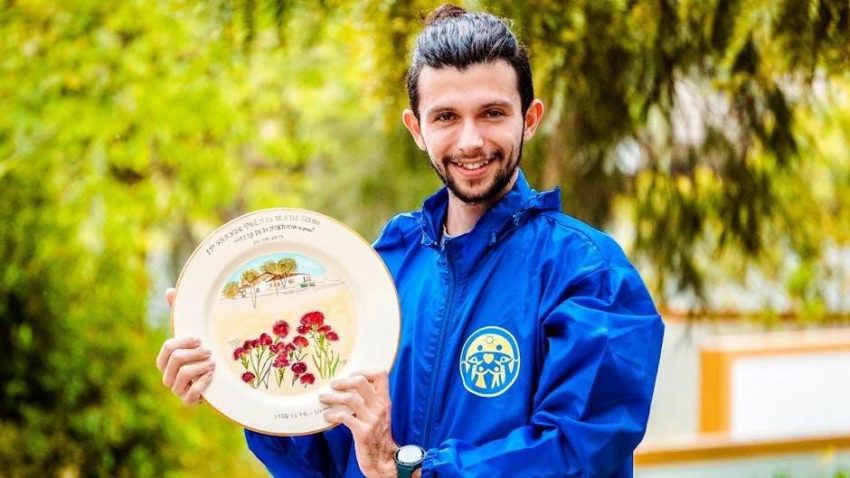The Junior Flowers Badge is part of the Legacy badge set, introduced in 2011, replacing the retired Plants and Animals badge․ This badge allows Girl Scouts to explore the science, benefits, and creativity surrounding flowers, fostering curiosity and appreciation for nature through hands-on activities and learning․
Overview of the Badge
The Junior Flowers Badge is designed to help Girl Scouts explore the fascinating world of flowers through hands-on activities and learning․ This badge focuses on five key steps: uncovering the science of one flower, observing flowers in their natural habitat, discovering how flowers benefit people, having fun with creative flower projects, and sharing knowledge with others․ By completing these steps, girls gain a deeper understanding of flower anatomy, their role in ecosystems, and their practical and emotional benefits․ The badge encourages curiosity, creativity, and a connection to nature, while fostering essential skills like observation, research, and teamwork․ It’s a fun and educational journey that celebrates the beauty and importance of flowers․
Importance of Flowers in the Curriculum
The integration of flowers in the curriculum offers a unique opportunity for Girl Scouts to connect with nature and science․ Flowers provide a hands-on way to study botany, ecology, and the environment, making complex concepts accessible and engaging․ By exploring flowers, girls develop critical thinking skills and an appreciation for the natural world․ Additionally, flowers have practical and emotional benefits, teaching girls about their role in ecosystems and human life․ This curriculum fosters creativity through activities like art and perfumery, while encouraging teamwork and leadership․ The study of flowers bridges academic learning with real-world applications, preparing girls to value and protect the environment while discovering the beauty and significance of flora․
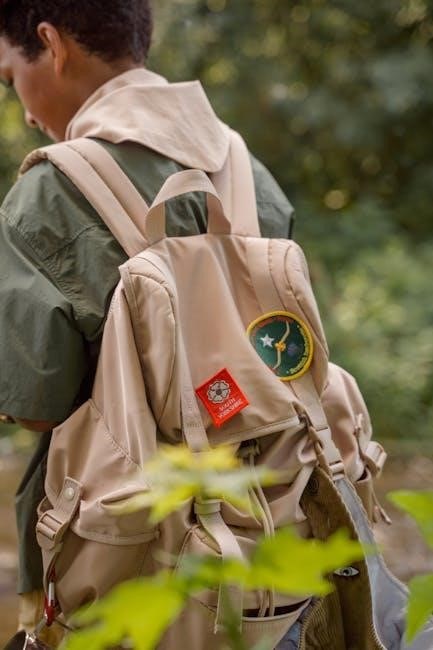
Step 1: Uncover the Science of One Flower
Begin by exploring the science behind a single flower․ Go on a flower hunt, observe its anatomy, and learn about its parts and functions․ Use tools like magnifying glasses to discover hidden details and understand the importance of flowers in nature and ecosystems․
Understanding Flower Anatomy
Understanding flower anatomy is the first step in earning the Junior Flowers Badge․ Flowers are complex structures with specific parts, each serving a vital function․ The main components include petals, which attract pollinators, sepals that protect the bud, stamens (male reproductive organs), and pistils (female reproductive organs)․ The stamen consists of a filament and an anther, while the pistil includes a stigma, style, and ovary․ These parts work together to facilitate pollination and seed production․ By studying the anatomy of a single flower, girls can gain insights into the biology and importance of flowers in ecosystems․ This knowledge forms the foundation for further exploration in the badge program․
Why Flowers Are Important
Flowers play a vital role in our ecosystem and daily lives․ They are essential for pollination, attracting bees, butterflies, and birds, which helps plants reproduce and set seeds․ Beyond their beauty, flowers provide fruits, vegetables, and seeds, forming the base of many food chains․ They also offer practical benefits, such as ingredients for medicines, dyes, and fragrances․ Additionally, flowers hold emotional and cultural significance, often used to express love, sympathy, and celebration․ Understanding their importance helps girls appreciate nature’s interconnectedness and the ways flowers impact both the environment and human well-being․ This knowledge enriches their connection to the natural world and fosters stewardship․
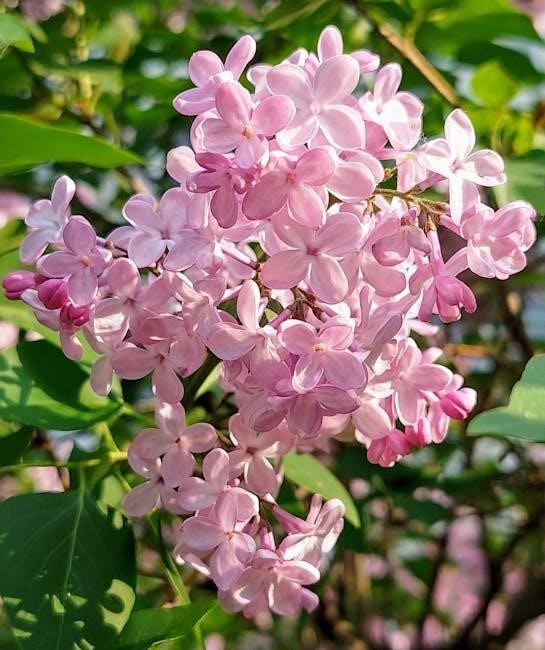
Step 2: Look Under the Petals
Discover the hidden details of flowers by observing them in their natural habitat․ Use tools like magnifying glasses or cameras to explore their intricate structures and colors, fostering curiosity and a deeper connection to nature․
Observing Flowers in Their Natural Habitat
Exploring flowers in their natural environment is a key part of the Junior Flowers Badge․ Take a walk in a park, garden, or even your backyard to observe flowers firsthand․ Notice how they grow, their colors, shapes, and how they interact with their surroundings․ If fewer flowers are available, consider an online tour of a botanical garden․ Use a magnifying glass or camera to capture details, and record your findings in a notebook․ Sketch or photograph the flowers to document their unique features․ Remember to ask permission before picking any flowers, and always respect the environment․ This activity helps build curiosity and appreciation for nature while fostering observational skills․
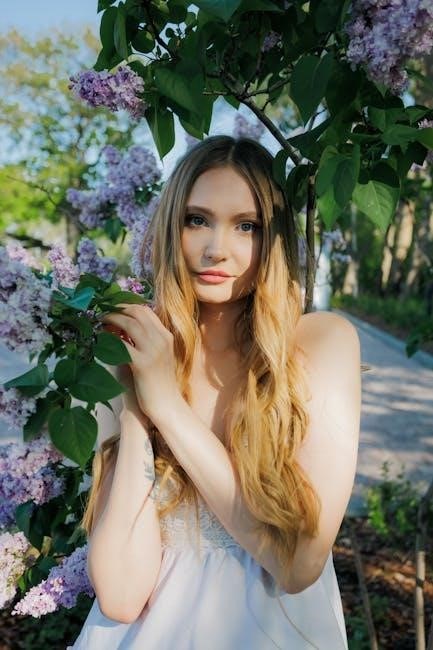
Using Tools for Closer Inspection
To delve deeper into the world of flowers, use tools like magnifying glasses or cameras for a closer look․ These tools help examine petal details, colors, and textures without damaging the flowers․ For detailed observation, consider bringing a notebook to sketch or write about your findings․ If flowers are scarce nearby, explore online resources with adult supervision to identify and study different species․ Documenting your observations will enhance your understanding and appreciation of flowers․ Remember to handle flowers gently and always ask permission before picking them․ This step encourages curiosity and provides hands-on learning about the natural world, aligning with the badge’s goal of fostering exploration and knowledge․
Step 3: Find Out How Flowers Help People
Discover how flowers benefit people practically and emotionally․ Learn about their role in perfumes, crafts, and therapeutic uses․ Explore their calming effects and cultural significance, fostering appreciation for their versatility and importance in daily life and traditions․
Practical Benefits of Flowers
Flowers provide numerous practical benefits, from food to medicine․ Bees collect nectar to make honey, while flowers supply seeds for cooking and edible petals for salads․ Many flowers have medicinal properties, used in herbal remedies and perfumes․ They also inspire crafts like dried flower art and wreath-making․ Additionally, flowers play a vital role in pollination, supporting ecosystems and food production․ Understanding their practical uses helps girls appreciate flowers beyond their beauty, fostering a deeper connection to nature and its resources․ This step encourages girls to explore how flowers contribute to daily life and environmental health, making learning engaging and meaningful․
Emotional and Therapeutic Value
Flowers hold significant emotional and therapeutic value, uplifting spirits and fostering well-being․ They are often used in baths to promote relaxation and calmness, while their fragrances can enhance mood and reduce stress․ Girls can learn how to create bath beads using flowers, exploring their therapeutic benefits․ Additionally, flowers are thoughtful gifts that show care and support, helping to strengthen relationships; This step teaches girls to appreciate how flowers can positively impact emotional health and provide comfort, encouraging them to share this knowledge with others to spread joy and mindfulness․ Understanding the therapeutic side of flowers deepens their connection to nature and its healing power․
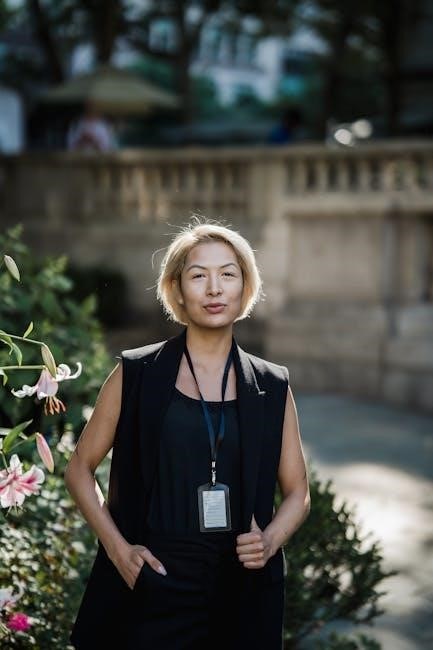
Step 4: Have Fun with Flowers
Explore creativity by making dried flower art and crafting your own perfume, discovering how flowers inspire joy and self-expression while learning about their unique qualities․
Creating Dried Flower Art
Get creative by making dried flower art, transforming fresh blooms into lasting designs․ To start, gather flowers you’re allowed to pick, ensuring you have permission․ Use a magnifying glass to observe their details before drying them․ Once dried, arrange the flowers into wreaths, collages, or other artistic patterns․ This activity not only fosters creativity but also teaches you about the structure and beauty of flowers up close․ Remember to record your process and observations in your notebook, noting which flowers work best for drying and why․ This fun project combines art and nature, helping you appreciate flowers in a new way while earning your badge․
Making Your Own Perfume
Discover the art of creating your own perfume using flowers! Start by learning what makes flowers smell and how to capture their fragrance․ Use fresh or dried flowers, essential oils, and a few simple ingredients like glycerin to craft your unique scent․ This activity teaches you about the science behind flower fragrances and how they impact emotions․ Follow the recipe provided in your badge guide to mix and match different floral scents․ Experiment with various combinations to create a perfume that reflects your personality․ Remember to document your process and the results in your notebook, noting which flowers work best for fragrance․ This fun, creative project is a great way to explore the practical and emotional benefits of flowers while earning your badge․
Step 5: Share Your Knowledge
Teach others about flowers and present your findings creatively․ Share your discoveries, notebook entries, and projects with your troop or community, inspiring others to explore flowers too․
Teaching Others About Flowers
Teaching others about flowers is a key part of earning the Junior Flowers Badge․ By sharing your knowledge, you inspire others to appreciate nature and learn about the science behind flowers․ You can create presentations, lead workshops, or even guide a flower hunt․ Encourage others to ask questions and explore flowers in their own environments․ Sharing your findings helps spread awareness of the importance of flowers and fosters a sense of community and learning․ This step not only strengthens your understanding but also builds leadership and communication skills․
Presenting Your Findings
Presenting your findings is a fun and creative way to share what you’ve learned about flowers․ You can create a presentation, poster, or even a short video to showcase your discoveries․ Include sketches, photos, or dried flower samples to make it visually engaging․ Discuss the science of flowers, their benefits, and how they help people․ Share your experiences, like observing flowers in their habitat or making flower art․ This step helps you develop communication skills and confidence while inspiring others to learn about flowers․ Be sure to highlight your favorite parts of the journey and what you found most surprising or interesting․
Earning the Junior Flowers Badge is a rewarding journey that combines science, creativity, and community engagement․ Through hands-on activities, girls gain a deeper understanding of flowers, from their anatomy to their practical and emotional benefits․ This badge fosters curiosity, appreciation for nature, and confidence in sharing knowledge with others․ By completing the five steps, girls develop essential skills in observation, critical thinking, and communication․ The badge not only celebrates the beauty of flowers but also highlights their importance in our lives․ It’s a meaningful way to connect with the natural world and inspire others to do the same, leaving a lasting impact on both the individual and their community․
